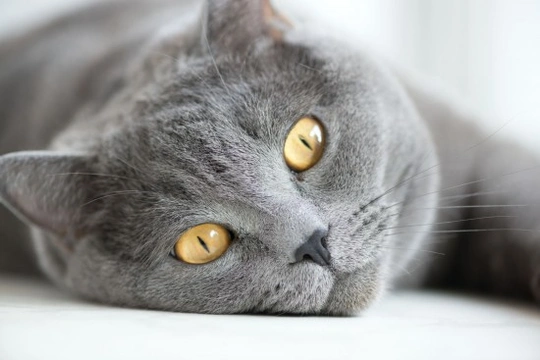
Conjunctivitis in Cats - Feline Conjunctivitis
The term “conjunctivitis” is used to refer to an inflammation of the moist parts of the eye tissue in the cat, which is located in the area running from the edge of the cornea of the eye down to the globe itself, in the front or visible part of the eye. The condition can lead to discomfort, irritation and potentially, pain for the affected cat, and often comes accompanied by a mucky discharge from the eye that may be gluey, runny or tacky to the touch.
Conjunctivitis can potentially be transmitted from the affected cat to other cats that they come into contact with, and requires treatment and management to resolve the condition and prevent its spread.
What is conjunctivitis?
Conjunctivitis is also sometimes referred to as “pink eye,” due to the sore and irritated appearance that the eyes can take on when affected by the condition. In its simplest terms, conjunctivitis is an inflammation of the conjunctiva, or the outer layer of the eye, and the condition is usually viral in origin, although it can also be bacterial in nature. Infections and allergic reactions are the most common causes of conjunctivitis in the cat.
What are the symptoms of feline conjunctivitis?
Because conjunctivitis is a visible condition, it is relatively easy to identify in affected cats. Signs and symptoms of the condition include:
- Reddening or soreness of the eye tissue
- Squinting from the affected eyes
- Excessive blinking
- A discharge from the eye itself, which may be clear and runny, mucky and sticky, or appear to be infected, looking yellow or greenish in colour and very gluey
- A build up of fluid in the eyes
- Infection of the upper respiratory tract
Conjunctivitis may affect one or both eyes, but left unchecked, an infection in one eye will almost certainly spread to the other eye as well.
If your cat has a minor cough or cold or develops feline influenza, this may also affect and spread to the eyes, causing conjunctivitis as well. Because your cat’s immune system will already be challenged with fighting the cause of the infection in question, this also provides a window of opportunity for other secondary conditions such as conjunctivitis to take a hold too.
How is conjunctivitis contracted and transmitted?
Conjunctivitis is easily passed from cat to cat, so it is possible that cats coming into contact with an affected cat will also contract the condition, particularly in a multi-cat household.
Conjunctivitis is generally viral in origin, and can be caused by the presence of feline herpes virus in the affected cat, or other viral infections. A compromised immune system or regular contact with other cats that are prone to viral infections can lead to development of the condition.
In some cases, conjunctivitis is bacterial in nature rather than viral, and conjunctivitis in the cat can also be caused by an irritation such as a foreign body within the eye, or as a response to an external allergen or allergic reaction. Conjunctivitis sometimes accompanies respiratory tract infections, such as coughs and colds.
Treatment for conjunctivitis
Treatment for conjunctivitis should be sought via your veterinary surgeon, and is usually fairly straightforward, and performed on an outpatient basis.
If the cause of the condition is found to be allergenic, identifying and removing the source of the allergen will usually mean that the condition clears up on its own.
Generally, viral and bacterial conjunctivitis is treated with antibiotics, either administered orally or via an injection. Topical creams and lotions may also be applied directly to the eye, to help the condition to clear up faster.
If the conjunctivitis is particularly bad or serious, in rare cases, ophthalmic surgery may be required in order to clear any blockages or impactions of the tear ducts of the eye and allow normal healing.
Preventing conjunctivitis
While conjunctivitis is a relatively common condition and one that you may not be able to prevent, there are steps that you can take to reduce your cat’s risk of developing the condition in the first place.
The best way of doing this is to ensure that all of your own cats are vaccinated against the main transmissible feline conditions such as feline influenza, and try to limit their contact with other unvaccinated cats. If you own more than one cat and one of them contracts the condition, limiting their contact with each other until the treatment is successfully completed will reduce the chances of the other cats in your home from catching the condition from the affected cat.
Also, if you know that your cat is sensitive to certain products or food ingredients, doing what you can to prevent their general allergies from flaring up will help to reduce the likelihood of them developing conjunctivitis too.



